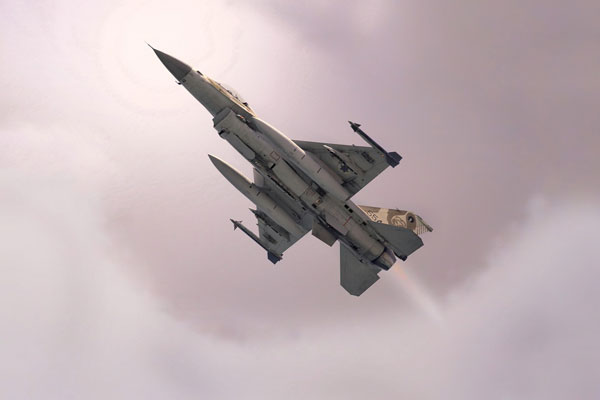Widespread AI-generated misinformation spreads amid Israel-Iran conflict

[Military Aircraft. Photo credit to Pixabay]
Large amounts of fake Artificial Intelligence (AI) generated photos and videos relating to the war are being posted on social media, spreading false information to the rest of the world, and undermining the reliability of online news platforms.
The conflict between these two countries most recently began on June 13th, when Israel launched an attack under an operation called “Operation Rising Lion”.
Israeli forces destroyed Iran’s major nuclear complexes while also killing their scientists and head generals.
This marked the rebirth of the long-lasting conflict between the two countries.
After the initial attack, more additional attacks have taken place by both sides, escalating the conflict.
In an effort to target the psychological aspects of the war, certain individuals and groups began creating fake videos and images using AI technology.
One widely circulated photo shows an F35 fighter allegedly shot down by Iran’s forces.
The image shows the plane broken and smoking atop a desert-like terrain, with people surrounding it.
The F35 fighter is a weapon developed by the US in recent years and has been known for its advanced capabilities and strategic importance.
By showing an image of it defeated, the creators were exaggerating Iran’s military power to bring the flow of victory to their side.
This image alone received 21.1 million views.
Lisa Kaplan, CEO of Alessia, a disinformation analysis company, told the BBC on June 20th that “There is no video that can prove that the F-35 was shot down.”
Furthermore, analysis revealed that the scale of people surrounding the plane compared to nearby cars, combined with the lack of sand disturbance around the crash site, clearly indicated how the image was AI generated.
This particular media campaign has raised suspicions that it may be related to Russia.
The Guardian has previously reported that Russia spends 1.5 billion dollars per year to influence global social media platforms.
As the US has introduced this sophisticated weapon system, experts believe Russia may lack sufficient countermeasures.
Kaplan has suggested that Russia may be attempting to target public trust in the F35 by influencing social media, thereby decreasing confidence in the aircraft’s capabilities.
Another famous video that went viral purported to show an F35 getting vaporized by Iran’s air defense systems.
However, fact-checkers discovered that this video was actually a scene from a video game simulation.
Pro-Israeli disinformation has also emerged, including one video showing citizens of Iran protesting with signs reading “we love Israel.”
Concerningly, even some legitimate news platforms have inadvertently used these images for their articles or stories.
These videos are created both for generating revenue and social media engagement, as well as to build support for Iran or Israel, and to influence the conflict’s narrative within digital platforms.
In 2025, social media has become an increasingly influential platform, and manipulating it ultimately means influencing the minds and opinions of billions around the world.
It is crucial for the public to develop the skills to separate fake news from real reporting, and equally important for news organizations to better monitor and verify content to prevent the spread of unreliable information.
On June 23rd, President Donald Trump announced that Iran and Israel have agreed to a complete ceasefire, hopefully reducing incentives for creating more fake media content.

- Jaeah Kim / Grade 7
- Seoul International School

![THE HERALD STUDENT REPORTERS [US]](/assets/images/logo_student_us.png)
![THE HERALD STUDENT REPORTERS [Canada]](/assets/images/logo_student_ca.png)
